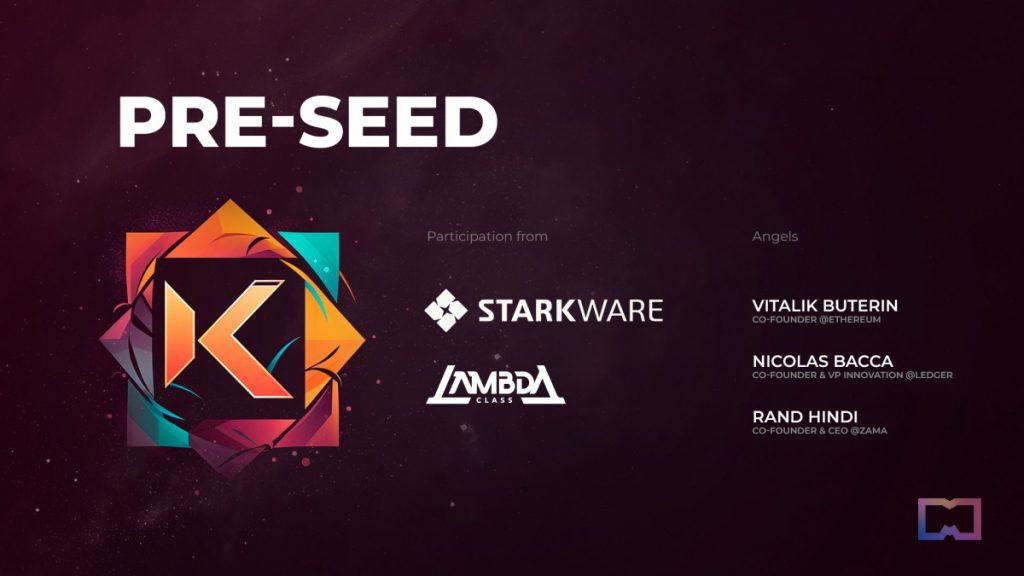New zkEVM Kakarot is preparing to launch a usable version on testnet by the end of August, following a pre-seed round announced earlier this month. Kakarot was built in 80 days without any venture funding.

Vitalik Buterin, along with Nicolas Bacca of Ledger, StarkWare, and others, were amongst the investors in the round. The funding amount remains undisclosed.
Elias Tazartes, CEO & co-founder, commented: “This is a hacker house success story. It all started when all of Kakarot’s founding and advisory team spent a week together in Lisbon in October, living together, hardly sleeping, and coding for every waking moment. It’s exciting now that investors of the caliber of Vitalik, StarkWare which created Cairo, and others are recognizing the great promise of this project, and investing.”
Kakarot zkEVM is an Ethereum Virtual Machine (EVM) implemented in Cairo, a Turing-complete language which enables provable computation using polynomials and the ZK-STARK proof system. By utilizing STARK proofs for both transactions and blocks, Kakarot ensures transparency and security. Leveraging validity proofs, Kakarot inherits security from Ethereum L1 while enabling lower costs.
Traditionally, developing for Starknet necessitated acquiring proficiency in its native language, Cairo. However, Kakarot changes the game by enabling developers to deploy code written in Solidity or any EVM compatible language onto Starknet, just as they would on Ethereum or Polygon.
In phase 1 of its project, Kakarot functions as an EVM within Starknet L2. Developers can effortlessly deploy their Solidity contracts directly on Starknet using their preferred toolchains, such as Foundry or Hardhat. Meanwhile, end-users can enjoy their familiar experience, including compatibility with Metamask.
Kakarot aims to facilitate interoperability with native Starknet protocols and foster composability between various protocols, encompassing both DeFi and GameFi.
Moving forward to phase 2 of its roadmap, Kakarot will merge with the Madara sequencer to form a unified stack, paving the way for L3 zkEVMs, which will offer provability and allow for off-chain computation while verifying on-chain, thereby reducing gas costs and enhancing overall performance.
Read more:
Read More: mpost.io









 Bitcoin
Bitcoin  Ethereum
Ethereum  Tether
Tether  XRP
XRP  Solana
Solana  USDC
USDC  Dogecoin
Dogecoin  TRON
TRON  Cardano
Cardano  Lido Staked Ether
Lido Staked Ether  Wrapped Bitcoin
Wrapped Bitcoin  Hyperliquid
Hyperliquid  Sui
Sui  Wrapped stETH
Wrapped stETH  Chainlink
Chainlink  Avalanche
Avalanche  LEO Token
LEO Token  Stellar
Stellar  Bitcoin Cash
Bitcoin Cash  Toncoin
Toncoin  Shiba Inu
Shiba Inu  Hedera
Hedera  USDS
USDS  WETH
WETH  Litecoin
Litecoin  Wrapped eETH
Wrapped eETH  Polkadot
Polkadot  Monero
Monero  Binance Bridged USDT (BNB Smart Chain)
Binance Bridged USDT (BNB Smart Chain)  Ethena USDe
Ethena USDe  Bitget Token
Bitget Token  Pepe
Pepe  Coinbase Wrapped BTC
Coinbase Wrapped BTC  Pi Network
Pi Network  WhiteBIT Coin
WhiteBIT Coin  Aave
Aave  Uniswap
Uniswap  Dai
Dai  Ethena Staked USDe
Ethena Staked USDe  Bittensor
Bittensor  OKB
OKB  Internet Computer
Internet Computer  Aptos
Aptos  NEAR Protocol
NEAR Protocol  Cronos
Cronos  BlackRock USD Institutional Digital Liquidity Fund
BlackRock USD Institutional Digital Liquidity Fund  Jito Staked SOL
Jito Staked SOL  Ondo
Ondo  Ethereum Classic
Ethereum Classic